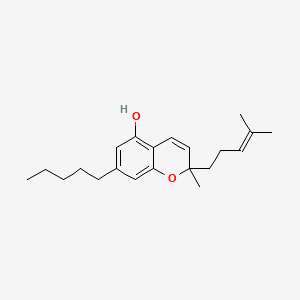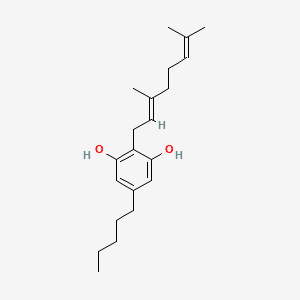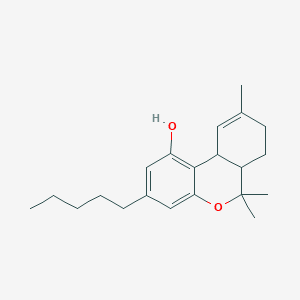
With the increasing legality of cannabis and its derivatives along with a growing body of research showing their numerous potential health benefits, cannabis has become a booming industry.
The biggest growth, however, is not in raw cannabis. Instead, it can be found in a variety of pills, vapes, and edibles that promise a specific cannabinoid, or a mix of cannabinoids. Want a 2:1 ratio of CBD to THC, or an even mix of TCH and CBN? You can get that and more these days.
So, which cannabinoids are good for specific health benefits, and which ones should you try? Here, we’ll cover everything you need to know about the leading cannabinoids so that you can make the best decision on what’s best for you.
TL:DR: What Are Cannabinoids?
- Cannabinoids, simply put, are the set of compounds found in cannabis, including THC, CBD, CBN, CBG, THCV, and others.
- They’re used for a wide variety of purposes, from aiding sleep and reducing anxiety, to enhancing or reducing appetite, boosting mood, dulling pain, or even reducing overall inflammation levels.
- THC is classically used to boost appetite in muscle wasting patients.
- CBD tends to be the best cannabinoid for overall health due to its effects in reducing systemic inflammation.
- THCV, with its stimulant properties and lack of dizziness/euphoric effects, tends to be the most “nootropic” cannabinoid for enhancing mental function.
- CBN is the best sleep aid.
- Finally, a mix of CBD and CBG tends to work well for pain, anxiety and depression.
History Of Cannabidiol
Efforts to isolate the chemicals in cannabis began in the late 19th century. Cannabidiol was first discovered and had its chemical formula worked out in the 1930s. The full structure of CBD was not mapped out until 1963, however.
For a long time, CBD was not believed to have many effects other than mitigating the anxiety-inducing effects of THC. In fact, many marijuana growers tried to minimize CBD content.
Research about the health benefits of cannabidiol, and in particular its use as an anti-inflammatory, began to accumulate in the early 21st century as medical, and later recreational use of marijuana products became legal across much of the U.S.
Endocannabinoid System 101
The endocannabinoid system is, at this time, not yet fully understood. What is known is that endocannabinoids (cannabinoid-like molecules produced within the human body) act as short-range “lipid messengers,” being released from one cell to send signals to other nearby cells.
Because they’re fat-soluble and hydrophobic, endocannabinoids can’t travel very far within the body. Also, they frequently act as retrograde signals, traveling from the recipient cell of a chemical message back to the originating cell.
Endocannabinoids are believed to be responsible for the appetite irregularities experienced following sleep deprivation, as well as heightening the preference for sweet flavors. Recent research also supports that endocannabinoids contribute to runner’s high, which was previously thought to be caused entirely by endorphins.
Cannabinoid Acids
Although not strongly acidic, most cannabinoids are acids and all cannabinoids have mildly acidic metabolites. In fact, the most studied phytocannabinoid is Δ9–THC-11-oic acid, the principal metabolite of Δ9–THC, better known simply as THC.
Cannabinoid Chart
The cannabinoid chart provided at the beginning of this article provides details about 7 of the most common cannabinoids used today. It includes information on what each cannabinoid is, where it’s sourced from, how it’s taken, what it’s used for, and the strength of research that’s available on its health benefits and uses.
We encourage you to view this infographic in higher resolution here. This image is free to use, with credit / a link back to the-unwinder.com
List Of Cannabinoids
Here’s a closer look at each of the 7 cannabinoids included in the cannabinoid chart.
CBD Oil

CBD is the common name of cannabidiol, one of the two most common cannabinoids along with THC. Unlike THC, CBD is not strongly psychoactive, although it can have a mildly anxiolytic effect. It is mainly known for its anti-inflammatory properties.
Since inflammation has been implicated in a wide range of health problems, CBD is being investigated for a wide variety of health benefits including pain relief, reduced anxiety and depression, a reduction in cancer risk and dermatitis symptoms, seizure control, and enhanced sleep. More exploratory research suggests that CBD may protect against neurodegenerative disorders and enhance neurogenesis. There is also limited evidence that it can aid weight loss and help with diabetes.
CBC Oil

Cannabichromene is one of the least-known cannabinoids and is still in the early stages of being researched. It is known to have few if any psychoactive effects. However, it is known to interfere with the body’s ability to break down endocannabinoids, and as such may enhance the effects of other cannabinoids. It also appears to have anti-tumor activity but this effect has only been demonstrated in mice and in human breast cancer cells grafted into mice; no in vitro human studies exist yet.
Overall, CBC is worth watching but is little understood as of yet.
CBN Oil

Cannabinol, or CBN, is a mildly psychoactive cannabinoid that is known mainly for inducing strong drowsiness. It is widely believed to be an effective sleep aid, however, research on this has been mixed. Anecdotally, it works for some people but not others, and is often found to work better when combined with CBD. CBN also seems to act synergistically with CBD as a pain reliever; the combination is likely to be helpful for people who suffer from pain-related insomnia.
As a sleep aid, the utility of CBN is limited by its long half-life; like other cannabinoids, it will tend to last into the next day. As such, it needs to be taken early and in low doses to avoid morning drowsiness, but can be effective when combined with CBD and melatonin.
CBG Oil

CBG is the common name of cannabigerol, another cannabinoid that has recently started to become popular. Cannabis doesn’t normally contain much CBG, as it tends to convert into other cannabinoids, thus, CBG products need to be made via artificial extraction.
There is little human research on CBG, but it seems to be useful as an anti-inflammatory and pain reliever. It can also relieve symptoms of inflammatory digestive disorders, such as colitis, mainly when taken orally. Like CBN, it is likely to have synergistic effects with CBD.
CBDA Oil

Cannabidiolic acid (CBDA) is a natural precursor to cannabidiol (CBD) found in cannabis. It catalyzes the production of cannabidiolate, which in turn is an immediate precursor to CBD.
While it has started to be sold as a “new” cannabinoid with effects similar to CBD, the reality is that there’s no evidence that it has effects on its own independent of its ability to turn into CBD. A milligram of CBDA is likely to turn into some fraction of a milligram of CBD in the body, and that’s where the benefits come from.
Long story short, this compound seems to be just marketing hype– you’re flatly better off just taking CBD.
THCV Oil

THCV, short for tetrahydrocannabivarin, is a homolog of THC which has a propyl (3-carbon) side chain instead of a pentyl (5-carbon) side chain. This produces notably different effects from THC. It is present in significant quantities in certain southern African and Central Asian strains of cannabis but is mainly found as an extract.
Unlike THC, THCV reduces, rather than increases, appetite and it is also is less psychoactive. It’s mildly stimulating but doesn’t cause dizziness or a “stoned” feeling when taken in low quantities of 1-2 mg. Combined with its ability to upregulate energy metabolism, this gives it potential as a supplement for weight loss and diabetes management.
Overall, it can have mildly stimulating and confidence-boosting effects similar to kratom, at least at low doses.
THC Oil

Commonly seen as the main ingredient in cannabis, THC, or tetra-hydro-cannabinol, is now understood to merely be the one with the most noticeable psychoactive effects. It causes euphoria, dizziness, and a “stoned” feeling. At higher doses, it can increase appetite and cause mental impairment, and at excessive doses can cause nausea and anxiety.
Overall it’s primarily a recreational drug, but THC does have medical uses for people who need an appetite boost, such as cancer and muscle-wasting patients. It also can be useful for treating glaucoma.
Take-Home Message
Cannabinoids can be useful supplements and health aids, but the nascent cannabis industry does tend to overhype them. CBD is a useful health-promoting supplement for many purposes. CBG is useful for treating symptoms of intestinal disorders, CBN for sleep, and CBD is synergistic with both. THC-V can be a useful nootropic, weight loss aid, and social enhancer.
Overall, none of these are likely to be life-changing on their own, but each has its place in a well-designed, personalized supplement stack. One key thing to remember is that cannabinoids have long half-lives, on the order of 24 hours, so they’ll build up in the body from day to day, and cannabinoids taken in the evening will “hang over” into the next day. As such, doses should be kept low, especially when taking them daily, and dosing should be lowered after the first day to avoid excessive build-up over time.
Studies You Can Read About Cannabinoids
- Structure of Cannabidiol, a Product Isolated from the Marihuana Extract of Minnesota Wild Hemp. I (Journal of the American Chemical Society, 1940)
- Hashish—I : The structure of Cannabidiol (Tetrahedron, 1963)
- Retrograde Signalling by Endocannabinoids (Cannabinoids, 2005)
- Endocannabinoids selectively enhance sweet taste (Proceedings of the national Academy of sciences, 2010)
- The Cannabinoid Acids, Analogs and Endogenous Counterparts (Bioorganic & medicinal chemistry, 2014)
- Anti-inflammatory Properties of Cannabidiol, a Nonpsychotropic Cannabinoid, in Experimental Allergic Contact Dermatitis (Journal of Pharmacology and Experimental Therapeutics, 2018)
- Cannabidiol in Anxiety and Sleep: A Large Case Series (The Permanente Journal, 2019)
- Cannabidiol, neuroprotection and neuropsychiatric disorders (Pharmacological Research, 2016)
- Effects of Cannabidiol on Diabetes Outcomes and Chronic Cerebral Hypoperfusion Comorbidities in Middle-Aged Rats (Neurotoxicity Research, 2019)
- Antitumor Activity of Plant Cannabinoids with Emphasis on the Effect of Cannabidiol on Human Breast Carcinoma (Journal of Pharmacology and Experimental Therapeutics, 2006)
- Cannabinol and Sleep: Separating Fact from Fiction (Cannabis and cannabinoid research, 2021)
- Cannabidiol, cannabinol and their combinations act as peripheral analgesics in a rat model of myofascial pain (Archives of oral biology, 2019)
- Cannabinoids in the management of difficult to treat pain (Therapeutics and clinical risk management, 2008)
- A chemotaxonomic analysis of cannabinoid variation in Cannabis (Cannabaceae) (American journal of botany, 2004)
- Δ9-Tetrahydrocannabivarin (THCV): a commentary on potential therapeutic benefit for the management of obesity and diabetes (Journal of Cannabis Research, 2020)
Editor’s note: we are regularly updating this review. If you see any problems, weird interpretations of the data, or just want to say hi, please reach out to hello@the-unwinder.com.
